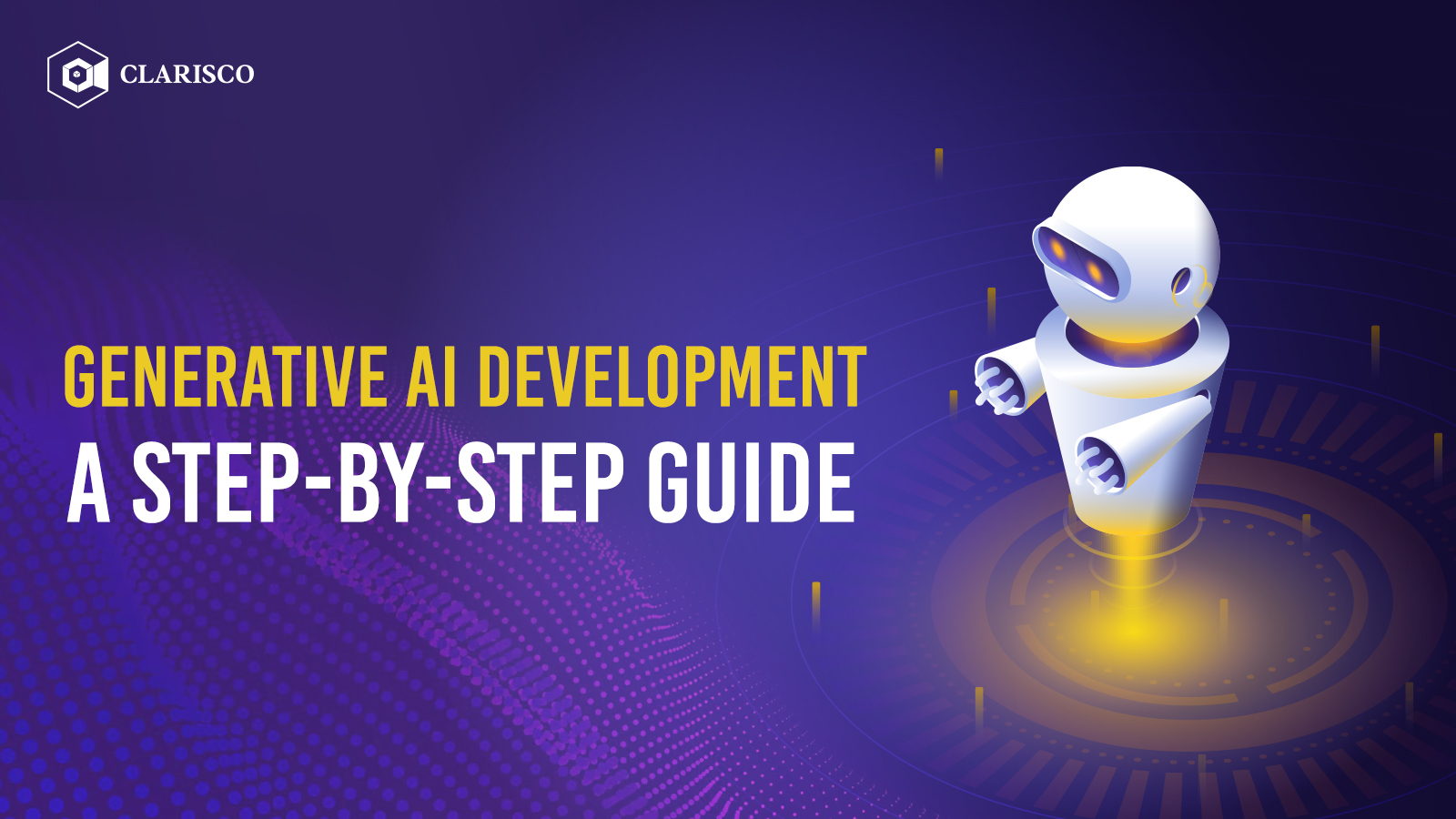
























































































































































































Clarisco requests your action to continue
The above mentioned products are used only for clear understanding. We don't have control of the brand and are not doing direct & indirect partnerships with them. We are also not doing promoting activities for them.
We all know AI, But what is it Generative AI? How it will make a change? How are people gonna benefit from this? Wait, there is more... You may heard and used OpenAI’s ChatGPT and Google’s Bard. That's it, That's what exactly is Generative AI. They are transforming the way how we create content, interact with machines, and solve problems. Those two companies have shown how powerful generative AI has become.
In this blog, we will provide a full guide to generative AI development, explaining how it works, its main uses, and the process of creating generative AI systems.
Generative AI creates new content by learning from existing data. Other than traditional AI, which follows set rules, generative AI uses machine learning models like neural networks to generate original content. These models learn patterns from the data and then create new outputs that resemble the original data but are still unique.
For example, OpenAI’s GPT-3 powers tools like ChatGPT. It has been trained on massive text data and can generate human-like responses based on user input. If you ask it to write a story, it can create a brand-new narrative similar to one written by a person.
This concept also applies to generative AI used for creating images or music. This ability to "create" makes generative AI one of the most powerful tools available today. A Generative AI development company can help businesses implement generative AI systems like GPT-3 with proper integration to deliver high-quality results.
1.Content Creation: Generative AI is used to produce text, videos, music, and visual art, helping marketing teams, media companies, and creatives to create content faster.
2.Chatbots and Virtual Assistants: AI-driven chatbots use generative AI to provide more human-like conversations, improving customer service in industries like e-commerce, healthcare, and finance.
3.Game Development: Developers use generative AI to create realistic worlds, characters, and scenarios in games, leading to more interesting experiences.
4.Healthcare: Generative AI supports drug discovery, creates synthetic data for research, and helps generate medical reports based on patient data.
5.Fashion and Design: AI helps design new clothes based on trends and personalizes individual styles by analyzing data.
6.Data Augmentation: Generative AI enhances datasets, for example, by simulating road conditions to train autonomous driving systems.
7.Film and Animation: The entertainment industry uses generative AI to create characters, special effects, and scripts, saving time and costs.
8.Music Composition: Musicians use AI to generate music by analyzing existing compositions, helping them create new tunes quickly.
9.Cybersecurity: AI simulates cyber-attacks, allowing experts to train systems to defend against threats.
10.Marketing and Advertising: Businesses use generative AI to create personalized ads, making it easier to reach their target audience.
An industry-leading AI development company assists businesses in using generative AI across these various applications, with smooth integration.
Generative AI is expected to grow fast. According to Bloomberg Intelligence, the global market size for generative AI was $40 billion in 2022 and is forecasted to reach $1.3 trillion by 2032. This growth will come from advancements in AI infrastructure and devices designed for large language models (LLMs).
Companies like Amazon, Microsoft, Google, and Nvidia will benefit as more businesses move to cloud infrastructure. By 2032, generative AI will expand from less than 1% to 10% of total IT spending. The main revenue sources will come from AI infrastructure services, AI-powered digital advertising, and specialized AI assistants.
Generative AI uses advanced technology, especially deep learning. Deep learning models, like neural networks, process large amounts of data to learn patterns. These models use layers of artificial neurons to analyze information and improve over time.
Generative Adversarial Networks (GANs) are a much-needed technology in generative AI. GANs have two networks. The generator creates new data, and the discriminator judges the quality of the generated data. This feedback loop improves the content generated over time.
Transformers, such as OpenAI’s GPT or Google’s BERT, are also important. They handle sequential data, like text, and generate coherent, contextually accurate outputs. A Generative AI development company uses these technologies to build high-performing generative AI systems for businesses.
1.Text Generators: These models, like GPT-3, generate human-like text.
2.Image Generators: Tools like DALL·E create images from text descriptions.
3.Music Generators: AI like MuseNet generates music based on existing compositions.
4.Code Generators: AI tools like GitHub Copilot suggest code to developers.
5.Video Generators: AI models create video content for various applications.
6.Voice Generators: Tools like DeepMind’s WaveNet generate realistic speech.
Generative AI is making a huge impact across industries. In healthcare, it helps with disease detection and research data generation. In entertainment, it creates characters, scripts, and special effects. Marketing uses AI to create personalized campaigns and improve customer engagement.
In finance, AI automates processes, improves trading strategies, and helps reduce risks. Education uses AI to create personalized learning experiences. Across industries, generative AI is enhancing productivity. For industries looking to make use of this futuristic technology, partnering with the best AI development company is a good choice.
Creating a generative AI system involves many steps, let me explain it simply. To start, clearly plan your goal whether you want the AI to create text, images, or music. Then, gather and prepare a large amount of data that the AI will use to learn. Once you have your data, pick the right AI model for your project and train it with the data you've collected.
After training, fine-tune the model to make sure its output is high quality. Test the model to verify it's working accurately. When you're satisfied with the results, deploy it on your desired platform. Don't forget to update it regularly. If the process seems confusing, contacting a Generative AI development company can guide you through these steps to build an effective generative AI system.
Web3, AR, VR, Blockchain, or any technology you name it. AI is gonna be a big part of this technological revolution in the 20th century. To be a part of this journey, we all need to be fully aware of it. For companies planning to be futuristic, working with a top-rated Generative AI development company will help. There may be some disadvantages there with AI, but just like any other technology, 'Artificial intelligence is a tool, not a threat'.
Our trustworthy and happy Clients

200+

served Clients with a happy smile
Awards & Recognition
We are extremely pleased that reputable publications around the world recognised our superior work.




We'd Love To Hear From You!
Know your requirement, our technical expert will schedule a call and discuss your idea in detail. All information will be kept confidential.

Plot No. 29, 30, Iswarya Nagar,
Madakkulam, Tamil Nadu 625003, India
Business@clarisco.com +91 9442430551Monday-Saturday: 10am - 7pm
Sunday: Closed
